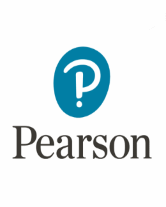Objectives
- Students will learn about a recent archaeological discovery.
- Students will examine the Web pages of other young people around the world as forms of self-expression.
- Students will present themselves through writing and media.
Materials
- Paper in a variety of bright colors, 81/2" x 11" or larger (11" x 11" is a good size), approximately 3 sheets per student
- Magazines that can be cut up for photos, art, and type
- Glue
- Scissors
- Pens and markers
Procedures
- Ask the students why they think personal Web pages are a form of self-expression. Discuss how they might present themselves on the Web. What would they want other young people to know about them?
- Together, visit sites created by young people around the world. Discuss what the pages tell about their owners and why they are interesting to the students. If some students have their own Web pages, visit those sites as well.
- Distribute the materials and have students mock up Web pages that reflect themselves, their, interests and personalities.
- The "home page" should include a title, an introduction to themselves, and "links" to one or two more pages.
- The additional pages (1 or 2) might include students' interests, ideas, original art or writing, and anything else they wish to share with others.
- Students should pull from the magazines any elements that will make the pages more exciting: photos, art, or fancy type.
- They can use real photos of themselves on the home page, or magazine photos of people, or humorous substitutes, such as a photo of an animal as long as the page reflects some aspect of themselves. Note: If you have software that allows you to do this kind of design on the computer, that is also an option.
- Share the Web page mock-ups with the class. Discuss how students chose to represent themselves on their "Web pages."
Extensions
- If your students know HTML (Hypertext Markup Language) or if you have software that can do basic HTML markup, have students create actual pages on the computer that can be viewed with your Web browser.

Provided by Scott Foresman, an imprint of Pearson, the world's leading elementary educational publisher. Its line of educational resources supports teachers and helps schools and districts meet demands for adequate yearly progress and reporting.
To explore personal web pages as forms of self-expression and to give students practice presenting themselves through writing and media.
TYPE:
Teaching Strategies




